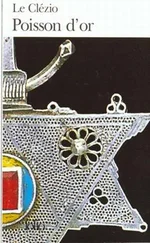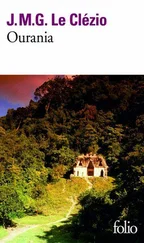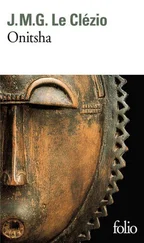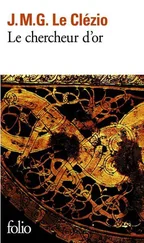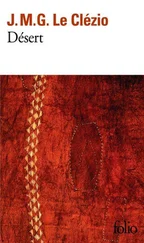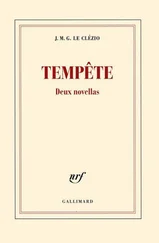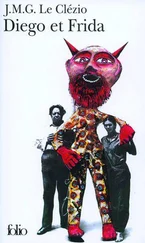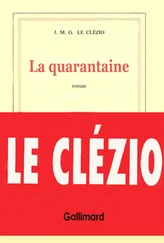Disconcerted, she abruptly lit a cigarette in an attempt to prolong the silence rather than continue a conversation she was no longer interested in. However, Carlotta eventually managed to get her to look at her. “Please don’t get me wrong,” she said in friendly tones, “I’m not looking for your pity. If you’d said the least word along those lines, I’d have left you right away. I’m well aware that we all have to sort out our own problems.”
“What is it you want, then?” Loredana asked, somewhat brusquely.
With a smile on her lips, the Countess gave a long sigh expressing maternal patience and indulgence. “Let’s say some Italian conversation. Would that suit you?” But her look begged, “Frank, open, irreverent conversation. Young conversation, my child.”
1 I pushed my tongue into the Princess’s mouth and my lance penetrated her womb. Our limbs were dripping with our fluids, they made the same sucking noise. Sometimes I let my slippery rod macerate inside, sometimes I pulled it out quickly. My scrotum was tossed hither and thither. The princess raised her quivering legs, giving off a most sweet smell. I punctuated novenas of deep thrusts with single short ones.
2 We both groaned, our chests heaving.
3 And my semen flowed into the depths of her vagina.
4 I had to lift up her feet and place them on my shoulders, then I placed my penis on her anus and plunged into the interior of that hidden and burning retreat. Then for a long time I enjoyed fellatio as she sucked my member. I needed to urinate. “O my Caspar,” she said to me, “however much you piss, my mouth can take it!”
5 I flooded her face with my water …
In which are described the Kircher Museum & the magnetic oracle
 KIRCHER RESUMED HIS studies, only breaking off from them to receive people who brought him curious animal, vegetable or mineral objects, knowing he was making a collection of them. It was thus that he extended his harvest of anamorphic rocks considerably; he was given stones or sections of minerals in which nature herself had depicted many easily recognizable shapes: dogs, cats, horses, rams, owls, storks & snakes; men & women could also be clearly seen in them, sometimes whole towns with all their parts, their particular domes & belfries. Similarly there were certain sections of branches or tree trunks that had emblems, portraits, even scenes illustrating precisely all the fables of Aesop beautifully engraved on them without recourse to art. The most precious find in Kircher’s eyes was without doubt that series of twenty-one flints where one could very distinctly see each of the letters of the Hebrew alphabet formed by the internal structure of the stone!
KIRCHER RESUMED HIS studies, only breaking off from them to receive people who brought him curious animal, vegetable or mineral objects, knowing he was making a collection of them. It was thus that he extended his harvest of anamorphic rocks considerably; he was given stones or sections of minerals in which nature herself had depicted many easily recognizable shapes: dogs, cats, horses, rams, owls, storks & snakes; men & women could also be clearly seen in them, sometimes whole towns with all their parts, their particular domes & belfries. Similarly there were certain sections of branches or tree trunks that had emblems, portraits, even scenes illustrating precisely all the fables of Aesop beautifully engraved on them without recourse to art. The most precious find in Kircher’s eyes was without doubt that series of twenty-one flints where one could very distinctly see each of the letters of the Hebrew alphabet formed by the internal structure of the stone!
“The unique language,” Kircher said, “the memory of the universal language given by God to Adam, with its magnificent descriptive power & the thousand & one arcana of its numerological structure. See what we can find in the most ordinary pebbles of the road, Caspar. In His divine goodness, the Creator had given us the means of finding Him in objects themselves; for nature has certainly drawn for us this symbolic Ariadne’s thread to help us find our way in the labyrinth of the world.”
Thanks to Kircher I came to see how the cosmos had been made on the analogy & in the image of the supreme archetype. From the summit down to the tiniest being everything was in absolute proportion and reciprocal conformity & yet, as Saint Paul testified, things invisible could be perceived by our intellect through material things …
From that day onward I put my heart even more fully into my work & into our search for the emblematic letters that would help us to go back in time to the origin of things.
“Research,” said Kircher, “is collecting. It is to gather together as many of these undeciphered wonders in order to reconstitute the perfection of the initial encyclopedia; it is to reconstruct the Ark with the same concern for completeness & urgency as Noah showed. And I will accomplish this holy task, Caspar. With your aid & God’s.”
My master confided in me more & more, exhibiting a trust in me of which I ever strove to prove myself worthy. I can testify that at that time, at the age of just thirty-six, he had a view of the world that had reached a state of clarity & complexity that he then simply proceeded to develop. Henceforth omnia in omnibus , “everything is in everything,” was his motto, meaning that there was no thing in the world that did not correspond to all the others according to a certain proportion & analogy.
We returned to Rome at the end of the summer of 1638 with no adventures worth mentioning apart from our discovery, as we left Calabria, of the fatal effects of the venom of the tarantula & the detailed study of its alexipharmakon. During the few months of our peregrinations, Kircher had acquired incomparable experience and knowledge. He brought back a phenomenal quantity of unique materials to the Roman College & his sole desire was to get down to studying them. During our journey back he had talked to me of the two books that were going through his mind & described his plans in great detail: a Mundus subterraneus , dealing with geology and hydrology, & an Ars magna lucis et umbrae , which would eclipse, in the field of optics, Kepler’s Paralipomena & even the Dioptrique of the previous year, in which Monsieur Descartes made bold to assert so many arrogant & foolish ideas.
But Pope Urban VIII insisted he give priority to applying his genius to Egypt and deciphering the hieroglyphs. Thus Athanasius had to wait several years before being able to write the works in which he uses the results of our explorations.
During our stay in the south, the collections of the late Sieur Peiresc had finally reached Rome. We spent several months organizing them & arranging them on the floor of the Roman College the Father General of the College had put at Kircher’s disposal. Together with everything my master had amassed during our recent voyage, it made a considerable accumulation of all kinds of rarities, especially since the Jesuits in the missions regularly sent him some from the East and West Indies.
Kircher wanted his museum to be the finest & most complete in the world. Not just a more extensive collection of curiosities than those of Paracelsus, Agrippa, Peiresc & others, but a veritable concrete encyclopedia, a display that would give each visitor the possibility of surveying the whole of human knowledge since the origins. The gallery where it was housed was resplendent with costly marble; Athanasius added some Greek & Roman columns, transforming the place into a portico where one could philosophize while walking up & down in the manner of the Stoics. Several classrooms opening off the sides were used to teach various arts & sciences.
My master had five oval panels painted in fresco on the vaults of the vestibule. The first, which greeted the visitor when he entered the museum, showed a salamander surrounded by flames.
“The salamander is me,” Kircher told me when I asked him about the meaning of the allegory. “It says that I urge visitors to brave the fire of difficult studies …”
I found that entirely appropriate, especially since I had seen my master so at ease in the blazing infernos of Etna and Vesuvius.
The whole of 1639 was spent opening crates & setting the contents out in the embellished gallery. A ship had arrived from China, its hold packed with treasures sent to Kircher by Father Giovanni Filippo de Mariani, a missionary to Japan & China. Rhinoceros horns, ceremonial regalia embroidered in gold, belts adorned with rubies, samples of paper, statues of idols, saints, mandarins, inhabitants of those countries; flowers, birds and trees painted on silk, various drugs unknown to our doctors, especially the one called “Lac Tigridis,” various books, manuscripts, grammars, etc.; all these riches poured into the Roman College, increasing the wealth of the museum. As well as that, there were numerous letters sent to Athanasius by his distant & faithful correspondents.
Читать дальше
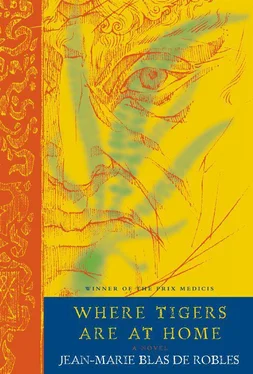
 KIRCHER RESUMED HIS studies, only breaking off from them to receive people who brought him curious animal, vegetable or mineral objects, knowing he was making a collection of them. It was thus that he extended his harvest of anamorphic rocks considerably; he was given stones or sections of minerals in which nature herself had depicted many easily recognizable shapes: dogs, cats, horses, rams, owls, storks & snakes; men & women could also be clearly seen in them, sometimes whole towns with all their parts, their particular domes & belfries. Similarly there were certain sections of branches or tree trunks that had emblems, portraits, even scenes illustrating precisely all the fables of Aesop beautifully engraved on them without recourse to art. The most precious find in Kircher’s eyes was without doubt that series of twenty-one flints where one could very distinctly see each of the letters of the Hebrew alphabet formed by the internal structure of the stone!
KIRCHER RESUMED HIS studies, only breaking off from them to receive people who brought him curious animal, vegetable or mineral objects, knowing he was making a collection of them. It was thus that he extended his harvest of anamorphic rocks considerably; he was given stones or sections of minerals in which nature herself had depicted many easily recognizable shapes: dogs, cats, horses, rams, owls, storks & snakes; men & women could also be clearly seen in them, sometimes whole towns with all their parts, their particular domes & belfries. Similarly there were certain sections of branches or tree trunks that had emblems, portraits, even scenes illustrating precisely all the fables of Aesop beautifully engraved on them without recourse to art. The most precious find in Kircher’s eyes was without doubt that series of twenty-one flints where one could very distinctly see each of the letters of the Hebrew alphabet formed by the internal structure of the stone!
